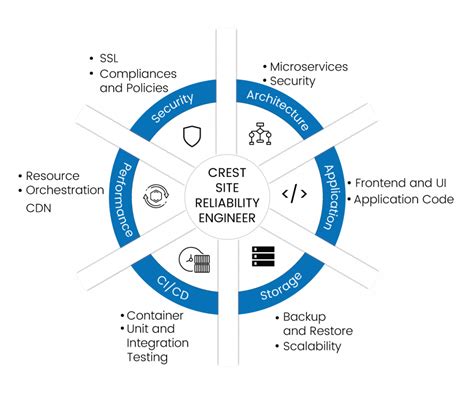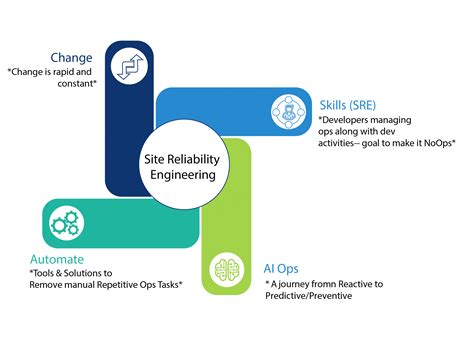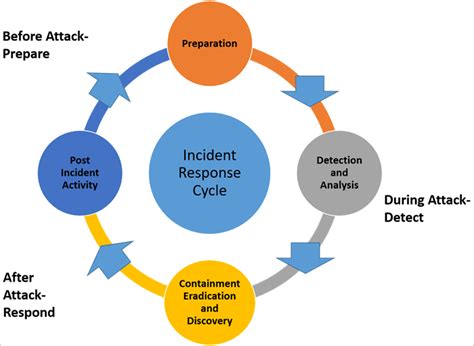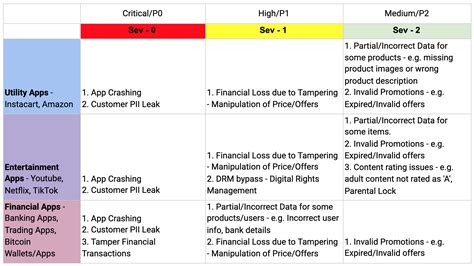Breaking News


Popular News


Learn the importance of Site Reliability Engineering (SRE) and incident management. Discover how to implement SRE in incident response and measure its impact. Continuous improvement in incident management.In today’s fast-paced digital world, website reliability and uptime are of utmost importance. When a site goes down, it can result in lost revenue, decreased customer satisfaction, and damaged brand reputation. This is where Site Reliability Engineering (SRE) comes into play. SRE is a discipline that incorporates aspects of software engineering and applies them to infrastructure and operations problems. It aims to create scalable and reliable software systems and prevent outages before they happen. In this blog post, we will delve into the role of SRE in incident management. We will discuss the importance of incident management, the process of implementing SRE in incident response, measuring the impact of SRE, and the continuous improvement in incident management. By the end of this post, you will have a better understanding of the crucial role SRE plays in ensuring the reliability and stability of digital services.
Contents

Site Reliability Engineering (SRE) is a discipline that incorporates aspects of software engineering and applies them to infrastructure and operations problems. SRE is essentially what happens when you ask a software engineer to design an operation function. It is a subdiscipline of systems engineering that has expertise in developing and managing large-scale systems. SRE ensures that the systems are reliable, scalable, and efficient.
One of the key principles of SRE is automation. This involves automating tasks that are manual, deterministic and repeatable. This allows SRE teams to spend more time on strategic work instead of firefighting for tasks that can be automated. The use of automation also reduces the potential for human error in system operation.
In addition, monitoring and alerting are crucial components of SRE. This involves setting up monitoring tools to detect potential issues and alerting the SRE team in real-time. This proactive approach allows the team to respond to incidents before they impact the user experience.
Furthermore, failure analysis and postmortems are important practices in Site Reliability Engineering. SRE teams conduct thorough analysis of incidents and outages, and document their findings in postmortem reports. This allows for continual improvement and learning from incidents.

Importance of Incident Management
Incident management is a crucial aspect of any organization’s operations. It involves the process of identifying, analyzing, and resolving incidents that can impact the normal functioning of the business. These incidents can range from technical glitches to security breaches, and if not managed effectively, they can have severe repercussions for the organization. This is why incident management is of utmost importance for businesses of all sizes and across all industries.
One of the key reasons why incident management is important is that it helps in minimizing the impact of incidents on the organization. By having a well-defined incident management process in place, organizations can swiftly respond to incidents and mitigate their impact on the business. This not only helps in reducing downtime and minimizing losses but also ensures that the organization’s reputation and customer trust remain intact.
Furthermore, incident management plays a critical role in enhancing the overall security posture of the organization. By promptly addressing and resolving incidents, organizations can identify vulnerabilities and weaknesses in their systems and processes. This proactive approach not only helps in preventing potential future incidents but also strengthens the organization’s resilience against cyber threats and other risks.
| Benefits of Effective Incident Management |
|---|
|
|
|
|
|
|
|
|

Site Reliability Engineering (SRE) is a discipline that incorporates aspects of software engineering and applies them to infrastructure and operations problems. When it comes to incident response, implementing SRE practices can greatly improve the way organizations manage and resolve incidents.
One of the key aspects of implementing SRE in incident response is the concept of error budgets. An error budget is a tool that allows teams to balance reliability and velocity. By setting aside a specific amount of time for managing incidents and implementing changes, organizations can ensure that their systems remain stable and reliable while still being able to innovate and release new features.
Another important factor in implementing SRE in incident response is the use of Service Level Objectives (SLOs) and Service Level Indicators (SLIs). These metrics help organizations to measure the reliability and performance of their systems, allowing them to proactively address potential issues before they escalate into major incidents.
In addition to these practices, implementing SRE in incident response also involves continuous monitoring and improvement. By regularly reviewing incident data and metrics, organizations can identify trends and patterns that can help them to prevent future incidents and improve the overall reliability of their systems.

Site Reliability Engineering (SRE) plays a crucial role in incident management within an organization. One way to measure the impact of SRE is through the reduction of incidents and their mean time to resolution (MTTR). By implementing SRE practices, organizations can systematically improve their incident response, thereby minimizing downtime and maximizing system reliability.
Another way to measure the impact of SRE is through improved operational efficiency. This can be seen in the form of automated incident response processes, standardized monitoring and alerting systems, as well as reduced human intervention in error-prone tasks. As a result, organizations can achieve greater scalability and consistency in their operations, leading to overall improvement in system reliability.
Furthermore, the impact of SRE can be measured in terms of customer satisfaction and business performance. When incidents are effectively managed through SRE practices, customers experience less disruption and improved service quality. This can lead to enhanced customer loyalty and positive brand reputation. Additionally, improved system reliability can reduce business costs associated with downtime and outages, ultimately driving revenue growth.
In conclusion, measuring the impact of SRE involves assessing the reduction of incidents, improved operational efficiency, and the effect on customer satisfaction and business performance. By leveraging SRE practices, organizations can quantifiably demonstrate the value of their investment in incident management and the overall improvement in system reliability.

The Role of Site Reliability Engineering in Incident Management
Continuous improvement is a key component in incident management within the context of site reliability engineering. It involves the ongoing process of identifying areas for improvement and implementing strategies to enhance the overall incident response system. By continuously assessing and refining the incident management process, organizations can effectively address and mitigate potential issues, leading to a more resilient and reliable operational environment.
One way to achieve continuous improvement in incident management is by conducting regular root cause analysis following each incident. This involves thoroughly evaluating the factors that contributed to the incident and identifying the underlying causes. By understanding the root causes of incidents, organizations can implement targeted corrective actions to prevent similar issues from occurring in the future, ultimately improving the overall reliability of their systems and services.
Another important aspect of continuous improvement in incident management is the establishment of key performance indicators (KPIs) to measure the effectiveness of the incident response process. By tracking and analyzing relevant KPIs, such as mean time to resolve (MTTR) and incident recurrence rates, organizations can gain valuable insights into the performance of their incident management practices and identify areas for enhancement.
Furthermore, promoting a culture of continuous learning and improvement among incident management teams is essential for driving ongoing enhancements in the incident response process. By fostering an environment where team members are encouraged to share insights, collaborate on solutions, and participate in relevant training and development opportunities, organizations can cultivate a proactive and responsive approach to addressing incidents and driving continuous improvement.

What is site reliability engineering (SRE)?
SRE is a discipline that incorporates aspects of software engineering and applies them to infrastructure and operations problems. It aims to create scalable and highly reliable software systems.
How does SRE contribute to incident management?
SRE teams proactively design, implement, and oversee the overall reliability of a system. They work on improving incident response, monitoring, and automation to minimize the impact of incidents.
What are the key responsibilities of SRE in incident management?
SRE teams focus on identifying potential system weaknesses, establishing best practices, implementing effective incident response processes, and continuously improving system reliability.
How does SRE differ from traditional operations teams in handling incidents?
Traditional operations teams often focus on reactive fire-fighting, while SRE teams are more proactive in preventing incidents through better automation, monitoring, and error budgeting.
What are some best practices for SRE in incident management?
Some best practices include conducting blameless post-incident reviews, implementing error budgets, setting service level objectives (SLOs), and fostering a culture of continuous improvement.
What role does automation play in SRE for incident management?
Automation plays a crucial role in incident management as it can help in detecting, responding to, and resolving incidents more quickly and efficiently, minimizing manual errors.
How can organizations implement SRE for effective incident management?
Organizations can implement SRE by creating dedicated SRE teams, setting clear SLOs, establishing error budget policies, and fostering collaboration between development and operations teams.